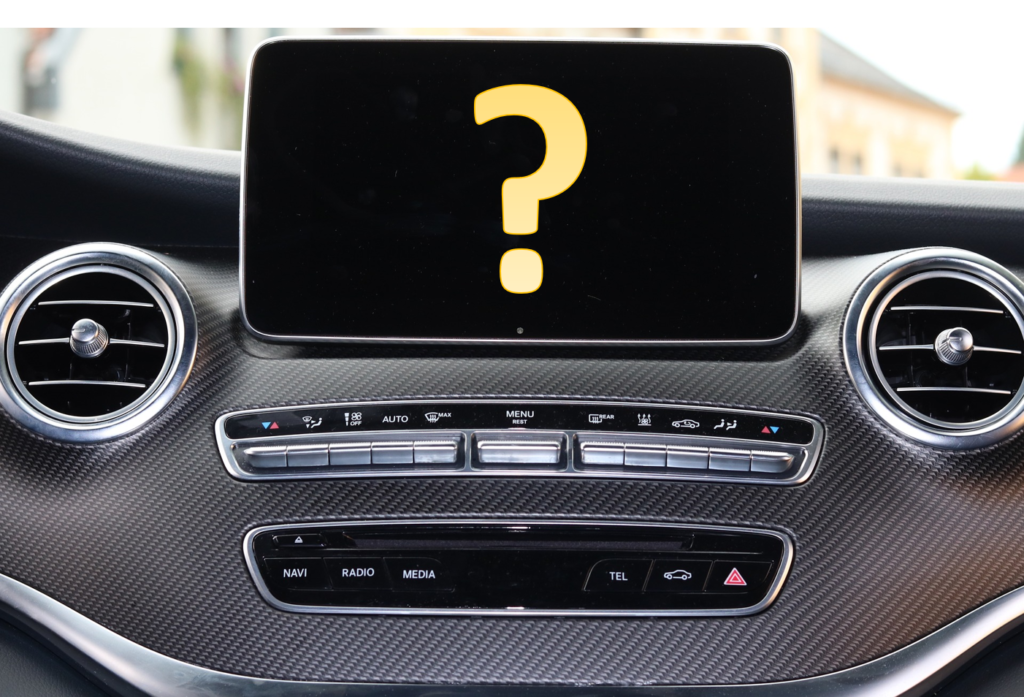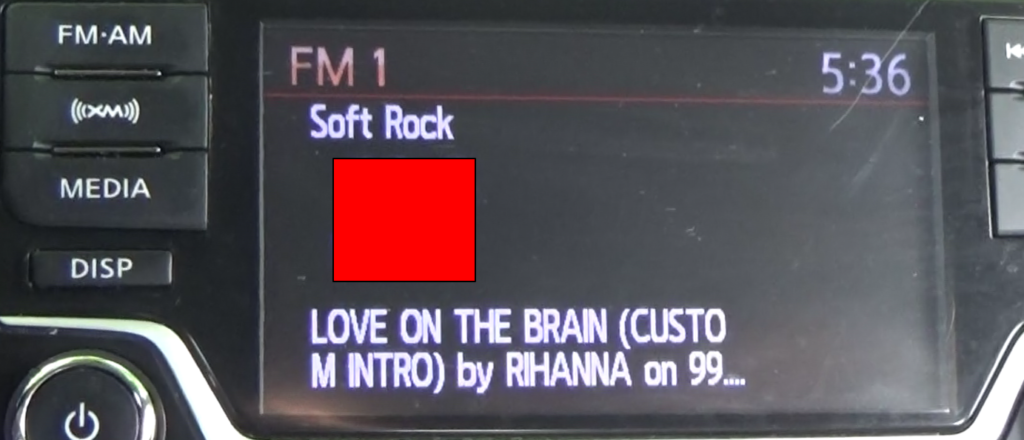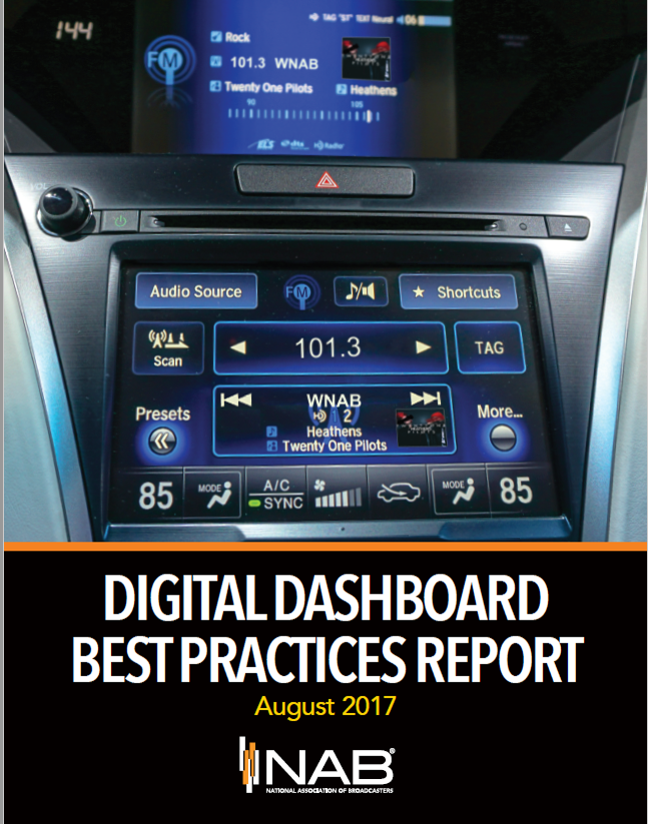 It seems like everyone in and around the radio industry is debating how connected cars will impact the business – today and in the future. And I’m personally happy because that’s been our goal for the past 8 years – to focus radio and both the challenges and opportunities in the dashboard. But what’s next? It’s remarkable that even wizened veterans in the auto industry give you a shrug when you ask about what mobility will look like just 5 years down the road.
It seems like everyone in and around the radio industry is debating how connected cars will impact the business – today and in the future. And I’m personally happy because that’s been our goal for the past 8 years – to focus radio and both the challenges and opportunities in the dashboard. But what’s next? It’s remarkable that even wizened veterans in the auto industry give you a shrug when you ask about what mobility will look like just 5 years down the road.
And yet, that’s what we’re all trying to do. Our Techsurveys have been very predictive, especially with Apple CarPlay, Android Auto, and the impact more dashboard options will have on traditional AM/FM radio. And our Detroit connections, coupled with our CES attendance and our DASH Conferences, have contributed to our ability to figure out where the puck is moving.
This year, we’ve been working with the NAB on a number of initiatives whose goal is to strengthen radio’s relationship with the automotive business, and specifically, what we can do to affect positive change in the car space that benefits broadcasting.
The complexity of automotive, coupled with the sweeping changes promised by the coming of electrification, autonomous cars, and shared mobility mean that no one’s truly an expert in the space. And yet, that doesn’t stop just about anyone and everyone from opining about cars and how they’ll impact radio.
Here in Detroit, the difference is that everyone has an opinion about cars – your electrician, your CPA, and the guy at the next pump at the gas station. And they don’t hesitate to share them with you.
So when I read a piece in Forbes by contributor Bobby Owsinski, it reminded me of these questions that real people wonder about radio and cars. It turns out Owsinski is a musician, engineer, and producer who’s written 24 books about recording, music, the music biz, and social media, many of which are being used in college classes. He’s obviously a music lover and someone who enjoys radio while driving.
But Owsinski is not a car guy and he apparently never worked in radio. And yet, his opinion piece – “For Radio To Live, It Must Embrace Technology” – goes to the core of many of the questions those of us who work in the radio business are contemplating.
As most programmers know, the best ideas come when you’re in the shower or driving a car. I can’t speak for Owsinski’s hygiene habits, but his mind started racing while stuck in L.A. traffic.
Among other things, he wondered why at a time when our TV screens are covered with real-time scrolling info, and the car dashboard now has a touchscreen with lots of room for information, he was listening to a “Monday Football Broadcast” on the radio and couldn’t find out the score of the game. And Owsinski asked, “Why not give us a ‘Fox Box’ on the radio that provides the score and all the other pertinent info right with a glance? In order words, give me more information in a graphical form.”
He went on to talk about artist and title information on a favorite local FM music station – that was incorrect. As Owsinski explained, “It might have been the info from the song before I tuned in, but it was no displaying false info, which is as good as none at all. And that’s when a station actually bothers to supply that info, as most don’t or can’t.”
Owsinski is right.
One of our assignments from NAB last summer was to conduct real-time audits of FM radio dashboard displays in three U.S. markets – Grand Rapids, Philadelphia, and Charlotte. In each market, we used two cars – one equipped with RDS and the other with HD Radio with the Artist Experience feature.
We started at “88” and worked our way up to “108,” recording the results of how each station’s dashboard displayed. Once the metadata populated, we hit “seek” and the tuner took us to the next station.
 The results? Spotty at best. From station to station in all three markets, the quality of displays was inconsistent, sometimes erratic, and far from standardized. This is in contrast to how radio’s competitors look in the dashboard display – Pandora, Spotify, satellite radio, and personal music collections. Across the board, they are uniform, accurate, and almost always attractive.
The results? Spotty at best. From station to station in all three markets, the quality of displays was inconsistent, sometimes erratic, and far from standardized. This is in contrast to how radio’s competitors look in the dashboard display – Pandora, Spotify, satellite radio, and personal music collections. Across the board, they are uniform, accurate, and almost always attractive.
And now, the inclusion of Apple CarPlay and Android Auto in new vehicles complicates radio’s challenge even further. Radio moves further away from the center stage when these platforms are turned on. And that means when drivers purposefully tune to FM radio, the pressure is on for broadcast stations to look good.
Our auditing process left us with the feeling that many broadcasters set up their dashboard display systems years and years ago – often by past regimes and owners. Chances are programmers weren’t even involved in a strategic conversation about a station’s look and feel on the screen. Most of the PDs I’ve talked to over the past several months weren’t even aware of the control a station has over how it looks and feels on car screens.
And that’s the point. For the broadcast radio industry to provide a consistently pleasing user experience for drivers in radio’s #1 listening location, it has to provide a consistent, appealing display.
With the help of the NAB team and radio engineering ace Glynn Walden, we  put together a “Best Practices” report available for free on the NAB website, regardless of whether you’re a member – or not. You can access it here.
put together a “Best Practices” report available for free on the NAB website, regardless of whether you’re a member – or not. You can access it here.
It includes a comprehensive 23-page report that details what we did and what stations can do to improve their dashboard interface. Thankfully, there’s also a simplified 2-page “Best Practices” document that provides a good summary for programmers and engineers – both of whom will need to work together to improve a station’s in-vehicle display.
Radio as an industry will be challenged to impact some of the macro issues revolving around mobility. Connecting at the highest levels with automotive executives is an endeavor the NAB is undertaking – an initiative that will require time, strategic planning, investment, and strengthened relationships. It’s essential the radio industry engage in these efforts to ensure its future in the automotive space.
But on the local level – in markets big and small – any station can evaluate its dashboard display – and improve it. And that’s important. Because as your audience trades in their old vehicles for shiny new cars and trucks – all of which are now connected – inferior and substandard displays stand out in the worst way – especially compared to radio’s many in-dash competitors.
And then there are the auto dealerships down the street from your station – the ones radio depends on for revenue and local dollars. Car salespeople always want to show their cool new vehicles in the best light. And because car buyers tend to be very interested in the dashboard and what it offers, it’s paramount to wow them with new features, great audio, and beautiful displays. If radio is behind that curve, it puts broadcast stations further back, less top of mind, and perceptually out of step with the times.
Raising the bar for radio’s dashboard displays across the country isn’t an easy task. But it starts with everyone reading this post, and sharing it within your company, as well as with friends and colleagues in the business. It’s about state broadcaster associations discussing this initiative in its newsletters and at its conferences and events in 2018.
Because there’s no standardization in the auto industry’s varied “center stacks,” and because dashboard features can vary by make and model, an audit will never be a perfect fix for every car on the road – new and old.
But cleaning up your metadata, making sure your album art is accurate, agreeing on how the various fields should look and the information they contain – that can all be done by any and all of you. Those publications on the NAB website will help get you started and guide you through the process.
And once you clean up your station’s basic display, you can begin contemplating some of the features Bobby Owsinski talked about in his Forbes article. How else can HD Radio’s Album/Advertiser Experience be utilized to provide more information? How might talk show guests and sports scores be used on dashboard displays? And what some of the ways radio’s best personalities can have a more professional, attractive look in the “center stack?”
I’m well aware you have a lot on your plate. Many of you are buried in the budgeting process, the holidays are fast approaching, and it will be a sprint to the finish line to make your numbers this year.
But radio’s place in the car has never been as important as it is right now today. We no longer have a monopoly on that prime dashboard real estate. The days of 2 knobs and 6 presets aren’t coming back.
So let’s focus on this new admission, learn what can be done, and put it into practice. Yes, it may come from the top down as your CEO or President issues the order to get audits going. But this one can start from the bottom up – while you’re driving home from work today. Look at your station on your car’s dashboard, start looking at your competitors and other stations in the market through this same lens.
Spend some time this weekend sitting in your garage, car port, or driveway, conducting an informal scan of your market’s FM radio displays – from 88 to 108.
Let me know what you learn, and how the NAB – and us at Jacobs Media and jācapps – can help.
Let’s drive this thing.
Access the NAB “Best Practices” report here.
- What To Do If Your Radio Station Goes Through A Midlife Crisis - April 25, 2025
- A 2020 Lesson?It Could All Be Gone In A Flash - April 24, 2025
- How AI Can Give Radio Personalities More…PERSONALITY - April 23, 2025




Leave a Reply